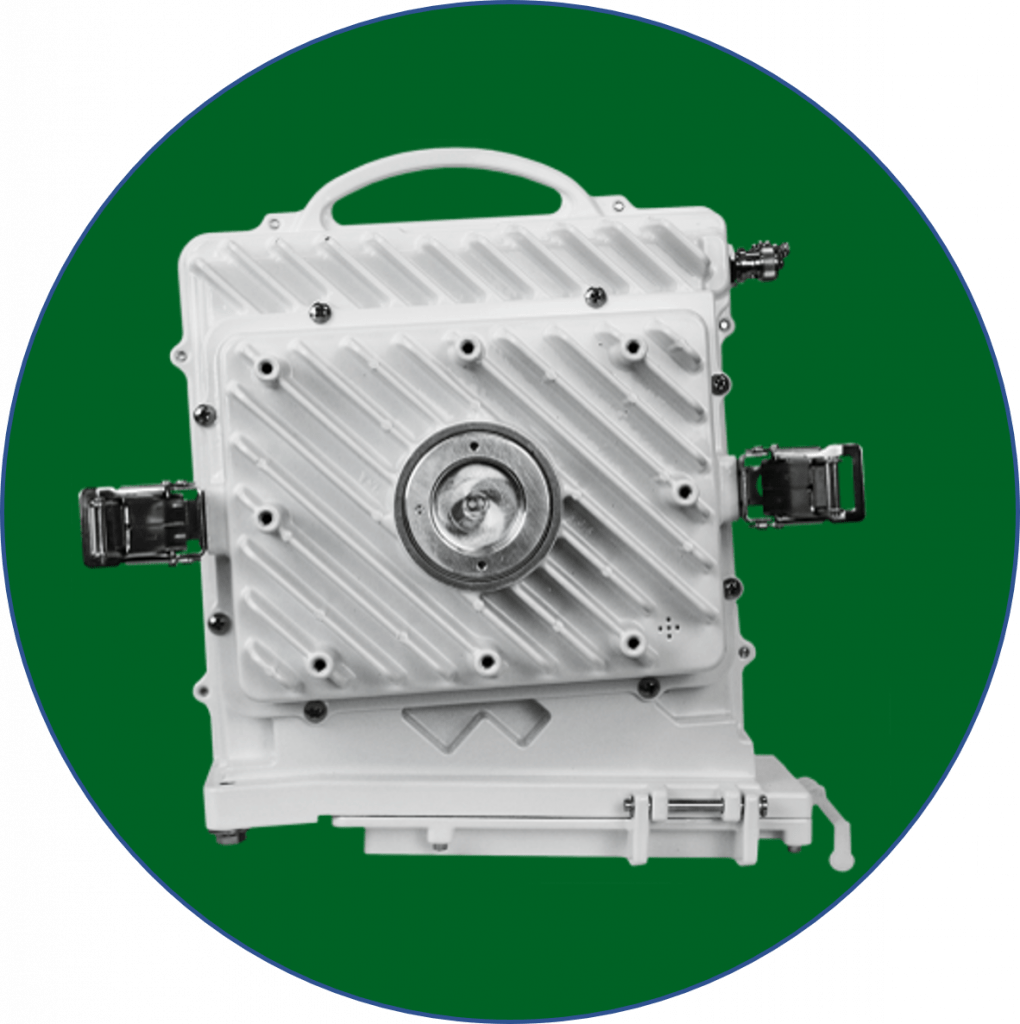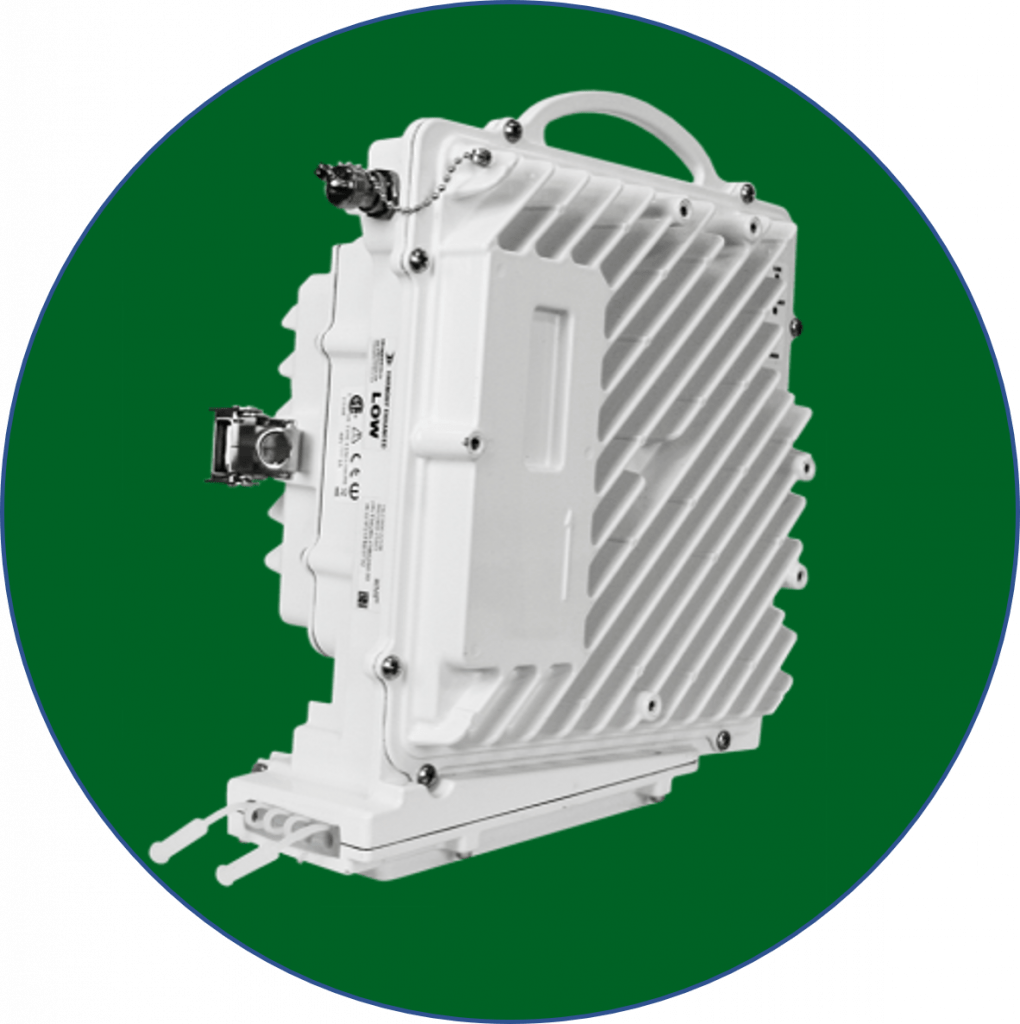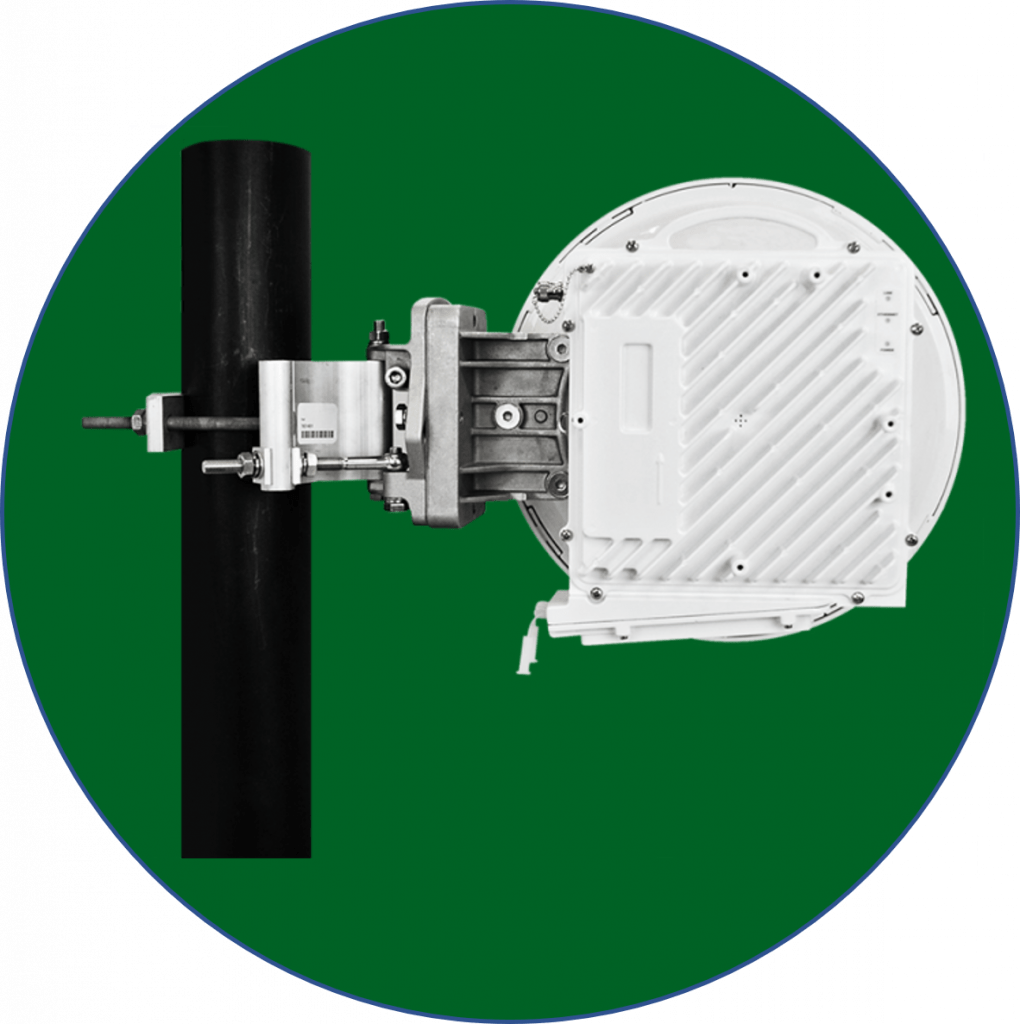Harmony Enhanced
DragonWave’s Harmony Enhanced is a point-to-point microwave radio platform that covers licensed frequency bands between 7 GHz and 38 GHz.
Harmony Enhanced carries up to 1 gigabit per second (1 Gbps) per radio in a single 56 MHz channel with DragonWave’s unique Bandwidth Accelerator (BAC) and up to 500 megabits per second (500 Mbps) without BAC. In Cross-Polarization Interference Cancellation (XPIC) tandem configuration, it doubles link capacity to up to 2 Gbps in a single 56 MHz channel with BAC and up to 1 Gbps without it.
Harmony Enhanced links typically cover line-of-sight distances between 500 m and 40 km, but links can be as short as a few hundred metres to connect nearby buildings on a campus and as long as 120 km to connect very remote areas. Maximum link length is determined by terrain, antenna height, antenna size (antenna gain), climate (rain zone), the selected frequency band and channel size, required data rate (link capacity) and the desired link availability target. If you want us to plan one or more Harmony Enhanced links for you, please click here.



Unique Feature Mix leading to the Lowest Total Cost of Ownership
Harmony Enhanced packs a veritably unique and balanced feature mix that can materially reduce the Total Cost of Ownership (TCO); the cost of buying and operating a link during a typical 5 to 15-year life cycle.
Harmony Enhanced:
- Is a zero-footprint, all-outdoor, self-contained microwave radio system. There’s no indoor units (IDUs) to deploy as with legacy split-mount microwave radio systems, and there’s no need for (acclimatized) shelters either.
- Is blessed with a high port density: 2 electrical Gigabit Ethernet ports and 2 Gigabit Ethernet SFP receptacles.
- Has a fully integrated non-blocking 14 Gbps Ethernet switch with Customer Bridging, Spanning Tree Protocol (RSTP & MSTP), Link Aggregation (LAG) between the 4 user interface ports and Link Layer Discovery Protocol (LLDP).
- Features Bandwidth Accelerator or BAC, a unique DragonWave feature where all data headers and all payload are compressed at wire speed prior to sending them across a radio link. Competitors only support header compression, which is inefficient, because headers represent just a small fraction of the overall payload. Depending on the traffic compressibility, BAC can increase link throughput by 3% up to and beyond a whopping 112%.
- Supports Cross Polarization Interference Cancellation (XPIC) enabling a pair of Harmony Enhanced radios deployed at each end of a link to transmit and receive on the same radio channel on both the vertical and horizontal polarization. Link capacity is doubled to a maximum of 1 Gbps in a single 56 MHz channel without BAC and up to 2 Gbps with BAC.
- Supports on-air 256 AES, which is unique for an all-outdoor microwave radio. 256 AES is a strong symmetrical cypher that renders eavesdropping on a Harmony Enhanced link pointless and is recommended for links transporting highly sensitive data.
- Has the best Graphical User Interface (GUI) that money can buy. Many of our customers that have hands-on experience with a different vendor’s microwave radio system have attested that our Harmony products are best-in-class when it comes to configuring them in the field or remotely using the inbuilt GUI.
How Harmony Enhanced Pares Down Total Cost of Ownership (TCO)
Surprisingly, the actual cost of buying a microwave radio (MWR) link typically represents just 20% or so of a relatively short 5 to 7-year TCO. The remaining 80% of the TCO is composed of spectrum (frequency) license fees, tower rent, maintenance and energy bills. Minimizing the deployment footprint and maintenance cost while maximizing spectral efficiency thus affects TCO most. For comparison: a 20% cost reduction on equipment yields just a measly 4% TCO reduction over 5-7 years.
All-outdoor Zero-Footprint architecture
This profound product philosophy – fewer is better – cuts back operational expenditures for:
- Site construction; no shelters / racks have to be purchased and/or installed,
- Site rent; no shelters / racks have to be rented in case 3rd parties own the site, shelters or racks,
- Installation; no IDUs have to be installed,
- Spares; as there are no IDUs, no spares are needed for IDUs either,
- Repairs; as there are no IDUs, no IDUs have to be repaired either,
- Energy bills; as no shelters are needed, there’s no electricity or gas bill for keeping the equipment in the shelter in the desired operating temperature and humidity range,
- Network management; in some cases, IDUs are treated as separate network elements by the Network Management System (NMS), which leads to higher licensing & maintenance costs for the NMS.
Integrated Switch & High Port Density
The port density of the Harmony Enhanced – four fully-configurable multipurpose ports – coupled to the integrated switch, enables very diverse deployment scenarios on the fixed side of the network, like a dedicated fiber or Ethernet cable for each connected customer, in-band and out-of-band management (a dedicated network management network) and all kinds of network topologies like an (optical) ring, chain, hub-spoke and meshed networks. Optical connectivity is granted straight from the Harmony Enhanced radio, spanning up to 120 km on single mode fiber. The high port density and the integrated switch therefore eliminate costly Cell Site Routers (CSRs) in the majority of microwave radio deployment scenarios.
Unique Bandwidth Accelerator
With BAC, wire speed, lossless payload and header compression, more data can be moved from A to B without increasing the channel size or adding additional links or channels. This can obviously lead to very significant savings on spectrum license fees and hardware deployments. BAC can also be used to move the same data through a narrower channel – again cutting spectrum license fees – or to back off modulation so that the increased system gain is used to deploy the link with smaller antennas, leading to lower site rental fees.
Cross Polarization Interference Cancellation (XPIC)
XPIC is typically used to double link capacity by adding a second carrier while letting both carriers operate on the same channel or frequency. As the same channel is used, in most markets, there’s no or a reduced license fee applied to the second carrier, which reduces the operational expenditure and thus TCO for the double-capacity link compared to operating on two distinct channels. Note that Harmony Enhanced MultiCarrier is hardware-optimized for dual-carrier XPIC operation, and therefore represents a lower-cost approach to high-capacity XPIC.
Integrated 256 AES Encryption
Having 256 AES encryption, integrated into a zero footprint and all-outdoor microwave radio is a unique DragonWave feature. It adds an additional layer of security, making eavesdropping on a link where this encryption is enabled futile. The savings come from the fact that no dedicated and costly encryption / decryption solution is required for the link.
